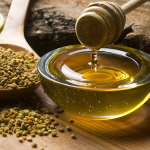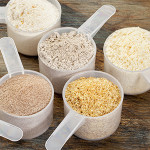 Throughout the history of mead, it has gone through revivals where it was sought after for its association with royalty and luxury and lulls where it was brewed underground in monasteries, not made for popular consumption. Similar to the revival of wine in the 1970s in California and the resulting worldwide popularity of carefully-crafted wines of all types, mead is currently on the cusp of a boom in popularity.
Throughout the history of mead, it has gone through revivals where it was sought after for its association with royalty and luxury and lulls where it was brewed underground in monasteries, not made for popular consumption. Similar to the revival of wine in the 1970s in California and the resulting worldwide popularity of carefully-crafted wines of all types, mead is currently on the cusp of a boom in popularity.
One factor holding people back from drinking mead as a daily beverage is the fact that many people simply don’t know what types of mead are available. They don’t know whether mead is sweet or dry, and they don’t know what mead flavours to expect. Worse yet, if you’ve never had mead before, drinking one bad mead (or the memory of drinking bad mead years ago at festivals or from a friend’s home brewery) can put you off the drink entirely.
In reality, like wines or beers, there are so many varieties of mead that even if you don’t like one type, there will probably be another that could become your favourite evening drink! Here’s a simple guide to the most common varieties of mead.
Traditional or show: the basics go a long way
If you want the basic mead, a traditional (or show) mead is made with honey, water, and yeast – that’s it. Don’t be fooled into thinking this means all traditional meads taste the same, though; many beers are brewed with the same types of yeasts and grains, but taste very different due to variations in the fermenting time, temperature, and so on. Also, the many honey varietals that result from bees pollinating different types of flowers means that no two batches will taste the same.
Braggot: just add grains
For those who are craft beer fanatics, braggots offer a unique option. Braggots are made with malted grains, and are essentially a cross between craft beer and mead. You can find as many varieties of braggots as you can beers! Whether you prefer a good stout or a light IPA, a mead maker has probably produced it.
Metheglin: spices and herbs make medicine
It’s no accident that metheglin sounds like the word medicine – when herbs and spices were used as medicines, they were added to mead to make it go down smoother! Now, they’re added to improve the taste of mead rather than the other way around.
Melomel: as many meads as there are fruits
The definition of melomel mead is that it’s made with fruits or fruit juices. This category is extremely broad, and it includes many other types of mead. For example, pyments are made with grapes or grape juice, cysers with apples or apple juice, and black mead with blackcurrants. There are also specific categories for certain meads that might seem to fall into more than one category; for example, rather than calling a grape-based mead with spices a pyment metheglin, these meads are known as hippocras. You could drink many different melomel meads and never taste the same mead flavour twice!
Other types: hot peppers, maple syrup, and more
There are still more categories of mead that aren’t covered by the traditional categories, and they are known by their own names. For example, capsicumel or capsimel mead is made with hot peppers, and acerglyn is the name for maple syrup-sweetened meads.
Similar to wine, beer, and other fermented beverages, meads are available in a variety of flavours for all occasions and palates. If you’re curious about mead, try a few different types of mead to figure out which ones you prefer. You can find mead in local meaderies, buy mead online from Canadian meaderies, or even purchase some meads from US-based or international mead makers.



